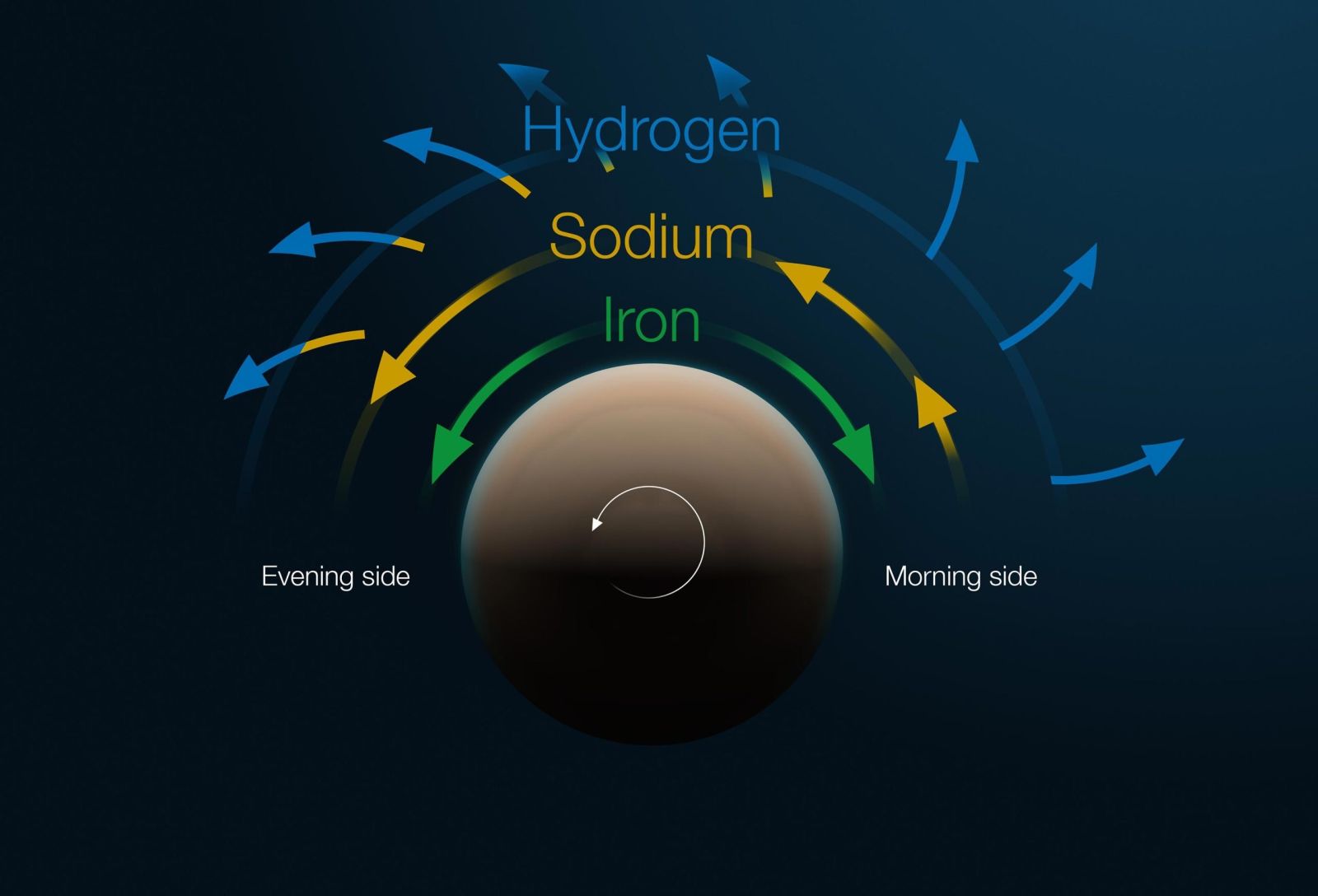Follow us on Google News (click on ☆)

Using the ESO's Very Large Telescope, researchers were able to observe winds carrying iron and titanium in the atmosphere of WASP-121b, an ultra-hot gas giant. These observations show a climate radically different from anything we know in our Solar System, with storms of unprecedented violence.
WASP-121b, also known as Tylos, is located about 900 light-years from Earth. This planet has a unique feature: it is tidally locked to its star, meaning one side is constantly exposed to stellar heat, while the other remains in darkness. The top of its stratosphere is estimated to have a temperature of around 2500°C (4532°F).
Scientists have discovered that Tylos' atmosphere is structured into three distinct layers, each with its own wind characteristics. This complex stratification was revealed thanks to the ESPRESSO instrument, which measured the speeds and chemical compositions of the different atmospheric layers.

Artist's impression of the exoplanet WASP-121b, showing the different layers of its atmosphere.
Credit: ESO/M. Kornmesser
One of the most surprising discoveries is the presence of a sodium jet stream that accelerates as it crosses the hot side of the planet. This phenomenon, never observed before, suggests unique climatic mechanisms that challenge current models of planetary meteorology.
In addition to sodium, researchers also detected titanium in Tylos' atmosphere, an element previously thought to be absent. This discovery highlights the importance of ground-based observations for studying exoplanets, complementing data obtained by space telescopes.
These advances foreshadow what future telescopes, such as the ESO's Extremely Large Telescope currently under construction, will reveal. These instruments will allow for the study of smaller and potentially habitable planets' atmospheres with unprecedented precision, expanding our understanding of the Universe.

Diagram showing the structure and motion of Tylos' atmosphere.
Credit: ESO/M. Kornmesser
What is an exoplanet?
An exoplanet is a planet located outside our Solar System, orbiting a star other than the Sun. The first exoplanet was discovered in 1992, and since then, thousands more have been identified.
These planets vary in size, composition, and distance from their host star. Some are gas giants similar to Jupiter, while others are rocky and could potentially harbor life.
The study of exoplanets is crucial for understanding the diversity of planetary systems in the Universe and for searching for environments conducive to extraterrestrial life.
How do astronomers study exoplanet atmospheres?
Astronomers use techniques such as spectroscopy to analyze the starlight that passes through an exoplanet's atmosphere. This light contains information about the chemical composition and atmospheric conditions of the planet.
By observing changes in this light as the planet passes in front of its star, scientists can infer the presence of different gases and elements, as well as the movements of atmospheric winds.
These methods allow for the mapping of exoplanet atmospheres in three dimensions, revealing unprecedented details about their climate and meteorology.